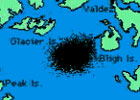
|
|||||||||||||||||||||||
Welcome |
| |
How does an ecosystem
recover from a major |
|

Photo credits: OR&R, NOAA; Exxon Valdez Oil Spill Trustee Council; Tri-State Bird Rescue & Research
| As you will learn from this Discovery Story, the answer is not simple. It isn't easy to determine whether a particular area of shoreline has recovered from oiling during a spill, or how to expect it to look when it has.
In March 1989, the tanker Exxon Valdez grounded on Bligh Reef in
Alaska’s Prince William Sound, rupturing its hull and spilling nearly 11
million gallons of crude oil. It remains the largest oil spill ever to occur in U.S. waters. |
||

|
||
All the facts aren't yet in, but here you can read about how NOAA biologists have been monitoring the long-term effects of this major spill on marine life, the various cleanup efforts, and the recovery of Prince William Sound ever since that unfortunate day.
You can analyze the Mearns Rock Time Series, which is a sequence of photos of the same oiled rock in Prince William Sound. The photos were taken once each year since the Exxon Valdez oil spill occurred there. You can try your hand at working with some real data collected by scientists at Mearns Rock, and answer the question:
|
||

The National Science Teachers Association
(NSTA) has included this online resource in its SciLinks database.
SciLinks provide students and teachers access to Web-based,
educationally appropriate science content that has been formally evaluated
by master teachers.
For more information about the SciLinks evaluation criteria, click here: http://www.scilinks.org/certificate.asp.
To go directly to the SciLinks log-on page, click here: http://www.scilinks.org/.
|

 To learn how Prince William Sound is recovering
from this environmental shock,
To learn how Prince William Sound is recovering
from this environmental shock, 